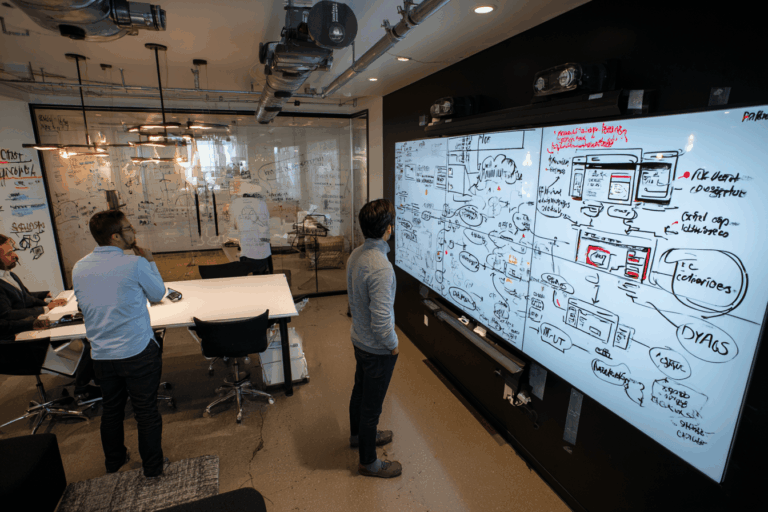7 Signs Your Content Isn’t AI-Optimized (And How to Fix It)
Introduction: The New Era of Search
In 2025, search engines have evolved dramatically from their keyword-matching origins. Today’s AI-powered search engines understand context, intent, and even the nuanced relationships between concepts. Google’s SGE (Search Generative Experience), Microsoft’s AI-enhanced Bing, and other platforms now deliver personalized, conversational results rather than just links.
This fundamental shift means traditional SEO tactics are no longer sufficient. Content that isn’t optimized for AI search engines risks becoming invisible, regardless of how well it’s written or how valuable the information is.
This guide identifies seven critical signs your content isn’t AI-optimized and provides actionable strategies to future-proof your digital presence in today’s AI-first search landscape.
1. Your Content Lacks Semantic Richness
The Sign
Your content focuses on exact keyword matches rather than covering related concepts, synonyms, and contextual information that AI search engines use to understand topics comprehensively.
The Fix
Implement semantic SEO strategies:
- Use natural language processing (NLP) tools like Clearscope, MarketMuse, or Surfer SEO to identify related entities and concepts
- Create comprehensive topic clusters rather than isolated articles
- Build knowledge graphs that connect related concepts
- Include definitions, explanations, and contextual information that helps AI understand your expertise
Practical example: Instead of creating a single page targeting “content marketing strategy,” develop a cluster of interconnected content covering audience research, content calendars, distribution channels, and measurement frameworks—all linking back to your main pillar page.
2. Your Content Lacks Structured Data
The Sign
You’re publishing content without implementing schema markup or other structured data formats that help AI search engines understand and categorize your information.
The Fix
Implement comprehensive structured data:
- Use Schema.org markup for all relevant content types (articles, products, FAQs, how-tos, etc.)
- Implement JSON-LD format (Google’s preferred structured data format)
- Utilize Google’s Rich Results Test to verify implementation
- Consider advanced structured data types like Speakable (for voice search) and HowTo markup
Code example:
<script type="application/ld+json">
{
"@context": "https://schema.org",
"@type": "HowTo",
"name": "How to Optimize Content for AI Search Engines",
"description": "Step-by-step guide to optimize your content for AI-powered search engines in 2025",
"step": [
{
"@type": "HowToStep",
"name": "Implement semantic SEO",
"text": "Use NLP tools to identify related concepts and entities."
},
{
"@type": "HowToStep",
"name": "Add structured data",
"text": "Implement schema markup to help AI understand your content."
}
]
}
</script>
3. Your Content Doesn’t Answer Questions Conversationally
The Sign
Your content is written in a formal, academic style that doesn’t address user questions directly or provide clear, concise answers that AI can extract for featured snippets and direct answers.
The Fix
Optimize for conversational search and direct answers:
- Research common questions in your niche using tools like AnswerThePublic, BuzzSumo, and Google’s “People Also Ask” sections
- Structure content with clear question-based H2s and H3s
- Provide direct, concise answers in the first paragraph following each question
- Use natural, conversational language that matches how people actually ask questions
- Include FAQ sections with structured data markup
Before: The implementation of artificial intelligence in search engine optimization has numerous benefits for digital marketers seeking to improve their visibility.
After: How does AI improve SEO? AI enhances SEO by analyzing user intent more accurately, personalizing search results, and helping marketers create more relevant content. This leads to higher rankings, increased engagement, and better conversion rates.
4. Your Content Isn’t Optimized for Multimodal Search
The Sign
Your content relies solely on text without considering how AI search engines now process and understand images, video, audio, and interactive elements.
The Fix
Create truly multimodal content:
- Include relevant, high-quality images with comprehensive alt text and captions
- Add descriptive filenames for all media (e.g., “ai-search-optimization-process-diagram.jpg” instead of “image001.jpg”)
- Transcribe all video and audio content
- Create visual data representations (charts, infographics) of key concepts
- Consider implementing image and video schema markup
- Optimize for visual search with clear, descriptive visuals of products or concepts
Practical tip: For each key concept in your content, ask: “How could I explain this visually?” Then create or source that visual element and optimize it for AI understanding with proper metadata.
5. Your Content Lacks E-E-A-T Signals for AI
The Sign
Your content doesn’t clearly demonstrate the Experience, Expertise, Authoritativeness, and Trustworthiness signals that AI search engines use to evaluate content quality and relevance.
The Fix
Strengthen E-E-A-T signals that AI can detect:
- Include author bios with credentials, experience, and expertise
- Link to authoritative sources and primary research
- Update content regularly with timestamps
- Cite specific experiences and case studies
- Include transparent methodology sections for research or data-based content
- Implement first-person narratives where relevant to demonstrate experience
- Create comprehensive About and Credentials pages on your site
Example implementation: “Based on my 8 years implementing AI SEO strategies for e-commerce brands, I’ve found that product descriptions with semantic entity optimization see 32% higher conversion rates. This was particularly evident in our 2024 case study with Webnetiks, where we increased organic traffic by 47% after implementing the following approach…”
6. Your Content Ignores User Journey Context
The Sign
Your content exists in isolation without considering where it fits in the user’s information journey or how AI search engines map content to specific stages of intent.
The Fix
Map content to user journey stages:
- Create content specifically designed for awareness, consideration, and decision stages
- Include clear navigational paths between related content
- Implement internal linking structures that guide users through logical next steps
- Use schema markup to indicate content position in a series or sequence
- Provide clear calls to action appropriate to the user’s likely next questions
Journey mapping example:
- Awareness: “What is AI search optimization?” (Informational article)
- Consideration: “AI SEO vs. Traditional SEO: What’s the difference?” (Comparison guide)
- Evaluation: “Case Study: How [Company] Increased Traffic 72% with AI SEO” (Proof point)
- Decision: “AI SEO Implementation Roadmap” (Action plan)
7. Your Content Isn’t Optimized for Voice and Multimodal Queries
The Sign
Your content doesn’t account for how users search differently across devices and modalities, particularly through voice search, visual search, and multimodal queries.
The Fix
Optimize for all search modalities:
- Include conversational long-tail phrases that match voice queries
- Structure content to answer specific questions concisely
- Implement local optimization for location-based voice searches
- Use natural language that matches spoken queries
- Create content that answers follow-up questions users might ask
- Consider implementing speakable schema markup
- Test your content with voice assistants to verify how it’s interpreted
Voice search example: Instead of optimizing for “best AI SEO tools,” also optimize for “what are the best AI SEO tools for small businesses in 2025?” and provide a clear, concise answer that voice assistants can read aloud.
Best Practices for AI Search Optimization in 2025
1. Focus on Topics, Not Just Keywords
- Build comprehensive topic clusters
- Cover subjects with depth and breadth
- Connect related concepts through internal linking
2. Prioritize User Intent and Experience
- Match content format to user needs (guides, tools, comparisons)
- Create content that solves specific problems
- Optimize page experience metrics (Core Web Vitals)
3. Leverage AI Tools Strategically
- Use AI content analysis tools to identify gaps
- Implement AI-powered content optimization
- Test content with AI summarization tools to see how machines interpret your content
4. Stay Current with AI Search Developments
- Follow updates from major search platforms
- Test new features and capabilities
- Adapt strategies based on evolving AI capabilities
Conclusion: Beyond Optimization to Integration
AI search optimization isn’t just about tweaking existing content—it’s about fundamentally rethinking how we create, structure, and connect information in an AI-first world. The brands and creators who thrive will be those who stop trying to “game” algorithms and instead focus on creating genuinely helpful, comprehensive, and contextually-aware content.
By addressing the seven signs outlined in this guide, you’ll not only improve your visibility in today’s AI search landscape but also build a foundation for sustainable digital presence as these technologies continue to evolve.
Action Items: Your AI SEO Roadmap
- Audit your existing content for the seven signs outlined above
- Prioritize fixes based on content performance and business impact
- Implement structured data across your highest-value content
- Build semantic topic clusters around your core subjects
- Create a multimodal content strategy that integrates text, image, video, and interactive elements
- Test your content with AI summarization tools to see how machines interpret it
- Monitor performance metrics to identify which optimizations have the greatest impact
Remember that AI search optimization is an ongoing process, not a one-time fix. The most successful content strategies will be those that continuously adapt to the evolving capabilities of AI search technologies.






